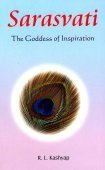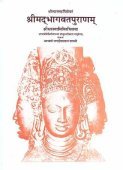Sandipani, Sāndīpani: 5 definitions
Introduction:
Sandipani means something in Hinduism, Sanskrit. If you want to know the exact meaning, history, etymology or English translation of this term then check out the descriptions on this page. Add your comment or reference to a book if you want to contribute to this summary article.
In Hinduism
Purana and Itihasa (epic history)
Source: archive.org: Puranic EncyclopediaSāndīpani (सान्दीपनि).—Preceptor of Śrī Kṛṣṇa and Balabhadra Rāma from whom they learned all the Vedas, art of drawing, astronomy, gāndharva Veda, medicine, training elephants and horses and archery. (For details see under Kṛṣṇa, Para 12).
Source: Cologne Digital Sanskrit Dictionaries: The Purana IndexSāndīpani (सान्दीपनि).—(also Sāndīpana); of Kāśī, and a resident of Avanti; was the preceptor of Kṛṣṇa and Balarāma. Taught them all branches of learning in 64 days; got back his dead son recovered from the world of Yama (from the sea Viṣṇu-purāṇa) by his pupils as gurudakṣiṇa; acted as purohita in the yajñas performed by Kṛṣṇa at Kurukṣetra;1 his concern when Kṛṣṇa and Kucela were caught once in storm and rain.2
- 1) Bhā III. 3. 2; X. 45. 31-49; 90. 46. Viṣṇu-purāṇa V. 21, 19-31. [2] Vāyu-purāṇa 98. 99.
- 2) Bhā X. 80. 39-40; Brahmāṇḍa-purāṇa III. 73-79.

The Purana (पुराण, purāṇas) refers to Sanskrit literature preserving ancient India’s vast cultural history, including historical legends, religious ceremonies, various arts and sciences. The eighteen mahapuranas total over 400,000 shlokas (metrical couplets) and date to at least several centuries BCE.
Natyashastra (theatrics and dramaturgy)
Source: Wisdom Library: SaṅgītaśiromaṇiSandīpanī (सन्दीपनी) refers to one of the twenty-two quarters tones (śruti) existing within an octave, according to the Saṅgīta-ratnākara (“ocean of music and dance”). This work is an important Sanskrit treatise dealing with ancient Indian musicology (gāndharva-śāstra), composed by Śārṅgadeva in the 13th century and deals with both Carnatic and Hindustani music. Sandīpanī has a frequency of 372.5098Hz. It is also known as Mandākinī.

Natyashastra (नाट्यशास्त्र, nāṭyaśāstra) refers to both the ancient Indian tradition (shastra) of performing arts, (natya—theatrics, drama, dance, music), as well as the name of a Sanskrit work dealing with these subjects. It also teaches the rules for composing Dramatic plays (nataka), construction and performance of Theater, and Poetic works (kavya).
Languages of India and abroad
Sanskrit dictionary
Source: DDSA: The practical Sanskrit-English dictionarySāndīpani (सान्दीपनि).—Name of a sage. [According to ViṣṇuPurāṇa, he was the tutor of Kṛṣṇa and Balarāma, and asked as his preceptor's fee that his son, who was kept by a demon named Pañchajana underneath the waters, should be restored to him. Kṛṣṇa, having undertaken to get him up, plunged into the sea, killed the demon, and brought back the boy to his father.]
Derivable forms: sāndīpaniḥ (सान्दीपनिः).
Source: Cologne Digital Sanskrit Dictionaries: Shabda-Sagara Sanskrit-English DictionarySāndīpani (सान्दीपनि).—m.
(-niḥ) A sage who was the preceptor of Krishna and Balarama.
Sanskrit, also spelled संस्कृतम् (saṃskṛtam), is an ancient language of India commonly seen as the grandmother of the Indo-European language family (even English!). Closely allied with Prakrit and Pali, Sanskrit is more exhaustive in both grammar and terms and has the most extensive collection of literature in the world, greatly surpassing its sister-languages Greek and Latin.
See also (Relevant definitions)
Query error!
Full-text: Shruti, Samyamani, Avantipura, Kucela, Kucaila, Pancaja, Prabhasa.
Relevant text
Search found 33 books and stories containing Sandipani, Sāndīpani, Sandīpanī; (plurals include: Sandipanis, Sāndīpanis, Sandīpanīs). You can also click to the full overview containing English textual excerpts. Below are direct links for the most relevant articles:
Chaitanya Bhagavata (by Bhumipati Dāsa)
Verse 1.8.26 < [Chapter 8 - The Disappearance of Jagannātha Miśra]
Verse 2.11.46-047 < [Chapter 11 - The Characteristics of Nityānanda]
Verse 1.8.24 < [Chapter 8 - The Disappearance of Jagannātha Miśra]
Bhagavad-gita (with Vaishnava commentaries) (by Narayana Gosvami)
Verse 2.4 < [Chapter 2 - Sāṅkhya-yoga (Yoga through distinguishing the Soul from the Body)]
Vishnu Purana (by Horace Hayman Wilson)
Garga Samhita (English) (by Danavir Goswami)
Verse 5.9.12 < [Chapter 9 - The Happiness of the Yadus]
Bhakti-rasamrta-sindhu (by Śrīla Rūpa Gosvāmī)
Verse 3.4.11 < [Part 4 - Parenthood (vātsalya-rasa)]
Verse 2.1.80 < [Part 1 - Ecstatic Excitants (vibhāva)]
Vishnu Purana (Taylor) (by McComas Taylor)
Chapter 21 - Ugrasena is reinstated < [Book Five: Kṛṣṇa]
Related products


